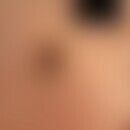Synonym(s)
HistoryThis section has been translated automatically.
Hans Ulrich Zellweger, 1964.
DefinitionThis section has been translated automatically.
Autosomal recessively inherited enzyme defect with mutation, the genes coding for peroxisomes (mainly PEX-1, PEX-5). This mutation leads to severe disorders of peroxisomal function (in peroxisomes, besides the catalase reaction, other important biochemical reactions take place that regulate the degradation and modification of fatty acids ). The enzyme defect leads to an accumulation of very long chain fatty acids (VLCFA) in various biochemically active cell systems and to consecutive organ dysfunction with degenerative changes and complex dystrophies in the brain (leukodystrophy), liver, kidneys (cysts), heart (heart defects), skeleton, eyes and skin (Abe Y et al. 2014).
You might also be interested in
Occurrence/EpidemiologyThis section has been translated automatically.
1:50,000 (Malinescu B et al. 2015)
EtiopathogenesisThis section has been translated automatically.
mutations in all genes coding for peroxisomes, in particular in the PEX-1 and PEX-5 genes. The resulting gene defect is inherited autosomal recessively and leads to severe disorders or the absence of peroxisomes. In addition to the catalase reaction, further biochemical reactions take place in the peroxisomes (Malinescu B et al. 2015), which regulate the degradation and modification of fatty acids (Crane DI 2014).
ClinicThis section has been translated automatically.
After a mostly undisturbed pregnancy of normal duration, the affected children are born with a normal weight; occasionally an umbilical cord vessel is missing, which is an indication of a congenital disorder. The following clinical features point to Zellweger syndrome:
CNS:
- cerebral cysts, reduced formation of the cerebral convolutions (microgyria or agyria), dilatation of the lateral ventricles.
Liver/kidney:
- increasing hepatomegaly with liver dysfunction in the first years of life. Cystic degeneration of the kidneys with disturbances of the excretory functions.
Skeleton:
- high, bulging forehead in a "pear-shaped" long skull (scaphocephaly)
- wide open fontanelles and wide cranial sutures
- high palate with sail cleft
- broad, flat root of the nose, strong cheeks,
- receding chin
- palms: four-finger or bridge furrows
- Fingers: Thumbs are broad, the fingers often stiffened (camptodactyly); in hypoplastic skin ridges (dermatoglyphs are found on the fingertips mostly ulnar loops.
Eyes:
- flat eye sockets, slightly protruding eyes, occasionally corneal opacity
- cataract or glaucoma (cataracts/ glaucoma), brushfield spots (white spots) of the iris, pigmentation of the retina, optic atrophy and nystagmus, often thickened eyelids, epicanthus
Musculature:
- Pronounced muscular hypotonia with hyperextensible joints and lack of muscular reflexes ("floppy infant").
Other:
- thymus dysplasia, hypoplasia of the lungs, ventricular septum defects
- backward rotated ears with hypoplastic helix bow and missing earlobes
- excess flabby neck skin.
- Less frequent are maldevelopments of the female external genitals.
LaboratoryThis section has been translated automatically.
The diagnosis must be confirmed by the determination of extra-long-chain fatty acids, plasmalogens and pipecolic acid in urine. There is an accumulation of hydrogen peroxide (absence of catalase).
Prenatal diagnosis useful: Chorionic villus sampling or amniocentesis required. Carriers of the gene (genetic defect on chromosome 1p22-23) can be identified by molecular genetic methods
Progression/forecastThis section has been translated automatically.
In case of general developmental delay and hypotension, because of drinking weakness and vomiting, the children do not thrive well. They have little movement and react little to their environment (often also because of hearing and visual impairments). Furthermore, epileptic seizures and breathing disorders with recurrent infections are frequently observed. The prognosis is unfavourable overall (Malinescu B et al. 2015).
Note(s)This section has been translated automatically.
These diseases include Zellweger syndrome, neonatal adrenoleukodystrophy, infantile Refsum syndrome, and rhizomellic chondrodysplasia punctata.
LiteratureThis section has been translated automatically.
- Abe Y et al (2014) Very-long-chain polyunsaturated fatty acids accumulate in phosphatidylcholine of fibroblasts from patients with Zellweger syndrome and acyl-CoA oxidase1 deficiency. Biochim Biophys Acta 1841:610-619.
- Crane DI (2014) Revisiting the neuropathogenesis of Zellweger syndrome. Neurochem Int 69:1-8.
- Klouwer FC et al (2015) Zellweger spectrum disorders: clinical overview and management approach.
Orphanet J Rare Dis 10:151. - Kumar S et al (2014) Zellweger syndrome: prenatal and postnatal growth failure with epiphyseal stippling. J Pediatr Endocrinol Metab 27:185-188.
- Lee PR et al (2013) Child neurology: Zellweger syndrome. Neurology 80:e207-210.
- Malinescu B et al (2015) Violent death in a rare peroxisomaldisease Zellweger syndrome. Forensic Sci Int 255:89-95.
Outgoing links (5)
Chondrodysplasia punctata; Fatty acids; Peroxisomes; Plasmalogens; Refsum syndrome;Disclaimer
Please ask your physician for a reliable diagnosis. This website is only meant as a reference.




